We talk a lot about muscles, after all they make up 40% of our body weight, and are the origin of our ability to move and to communicate. One very important aspect of muscle functioning and muscle injuries is the balance between the activity of muscles, while exercising. Until now it wasn’t very easy to evaluate muscle functioning while cycling or running. How would you do that? In one of my earlier posts I indicated that I use EMG to measure if and which muscles are being used within an exercise, and how much they are used and when. But the use of EMG is not an easy task. The equipment is expensive, wires prevent measurement at a distance and there can be errors in measuring as well (artifacts). Besides that, every measured muscle group needs its own electrode and channel.
So for years I have been looking for a simpler and more efficient solution. And my search is over! Coming from clinical research a company developed a set of shorts with embedded electrodes for the glutes, the hamstrings and the quads on the left and the right leg. And a Bluetooth connection makes it possible to measure from a distance and move freely, without the use of cables. The software automatically calculates muscular activity and muscle balances and imbalances in these important muscle groups, while moving at any given intensity. So no more empty talking about muscles working, about muscles firing or not. Now you can easily see it with your own eyes and make fact-based decisions. These tests can also be combined with simultaneous heart rate measurement and/or power measurements.Two simple tests to explain:
Subject 1: treadmill running with incremental speed 3-6-9-12-15km/h.
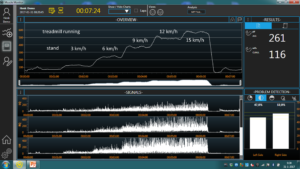
Subject 2 : (standing in rest)-5 unloaded squats-(rest)- 5 vertical jump-(rest)-walk on the spot-(rest)-run on the spot-(rest)- short run in the lab. The muscular activity of L and R Gluteus, L and R Quads, and L and R Hamstrings are measured. (the subject had a problem in the right foot!)
Look at the graphs below:
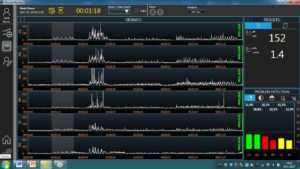



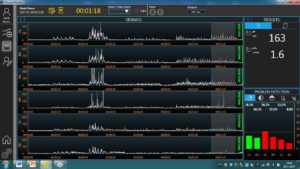
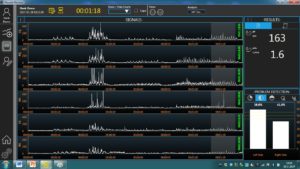
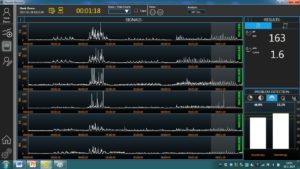
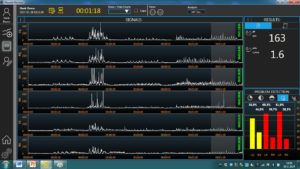
Notes: The grey highlighted zone is the time frame of the exercise and the measurement. In lower right hand corner one can see the relative muscular activities.
The good thing about measuring these factors will take away the many (false) assumptions on which we as coaches base our programs or corrections ( “we should work on your left …….. because it isn’t firing’…..”)

Thanks for sharing Henk!
This new information gives me a tough decision now between a set of these and myotrac infinity.
I have had challenges to find units with multiple channels and portable within a reasonable price range.
These look to be a less expensive option without much of the technical challenges you mentioned particularly when working with athletic populations.
Warm regards
Sandro
Fascinating stuff. Do you have any more materials about EMG?
I watched your Myontec webinar, but I am interested in learning more
about how to use EMG in endurance sports.
The problem with many of these gadgets is that they promise a lot,
but there’s very little practical guidance on how to use these things.
If you are an athlete, you can’t spend hours experimenting (although I want to).
The question I have been pondering about is whether you can see the
aerobic threshold transition on EMG. Namely, if you are assuming that below
aerobic threshold (first lactate or first ventilatory) you are mainly using slow
twitch fibers, when you cross this threshold, you will start recruiting more
fast-twitch fibers and the metabolism starts shifting from fat burning to glycolitic,
can this metabolic threshold be observed in EMG?
Based on your experience, what percentage of muscle groups are used in running
(hamstrings vs glutes vs quads)? Is there a difference between sprinting, middle-distance and long-distance or are percentages roughly the same?
Hello Ivan, thanks for your questions. Yes, The Myontec system that I use is very userfriendly (even I can use it 😉 And yes, EMG can be use to detect and monitor the anaerobic threshold, there is research about it. In the Myontec system a Polar HR monitor can be coupled for synchronuously measuring EMG and HR.
The use of different muscle groups depends on 1. running speed and duration, 2. individual anatomical qualities like muscle mass, limb leverage. muscle angulation etc. Often we see compensation mechanisms where lack of activity of one muscle group is compensated for by another. e.g lack of gluteus activity is compensated for by the hamstrings.